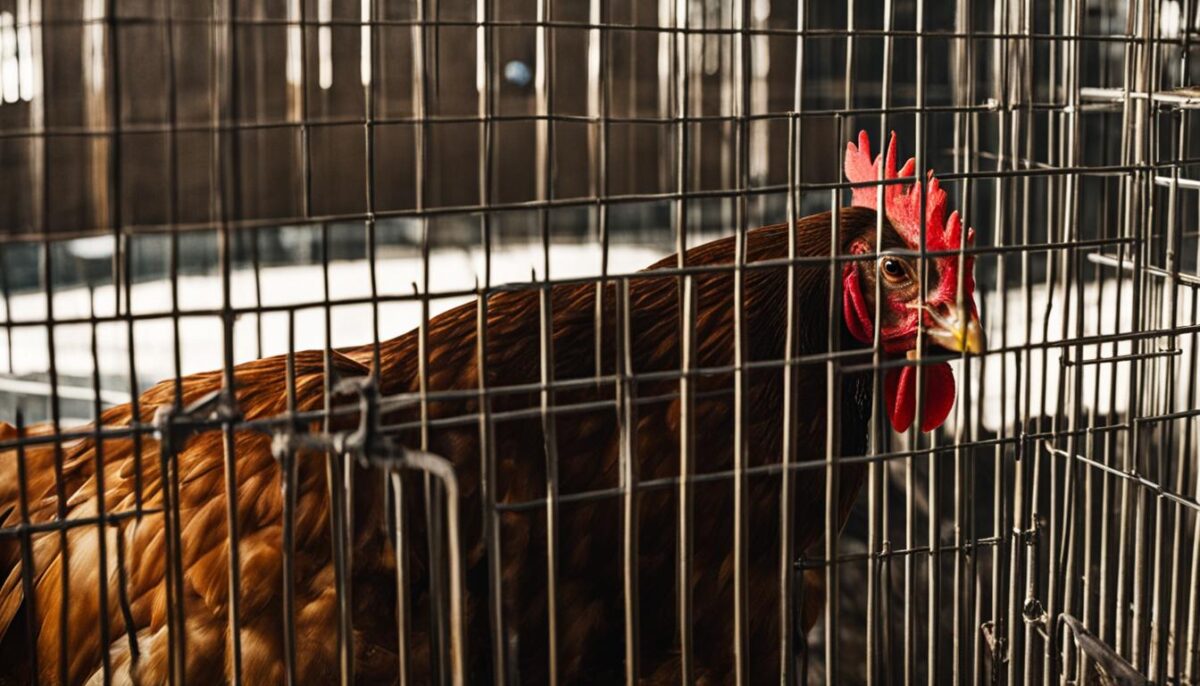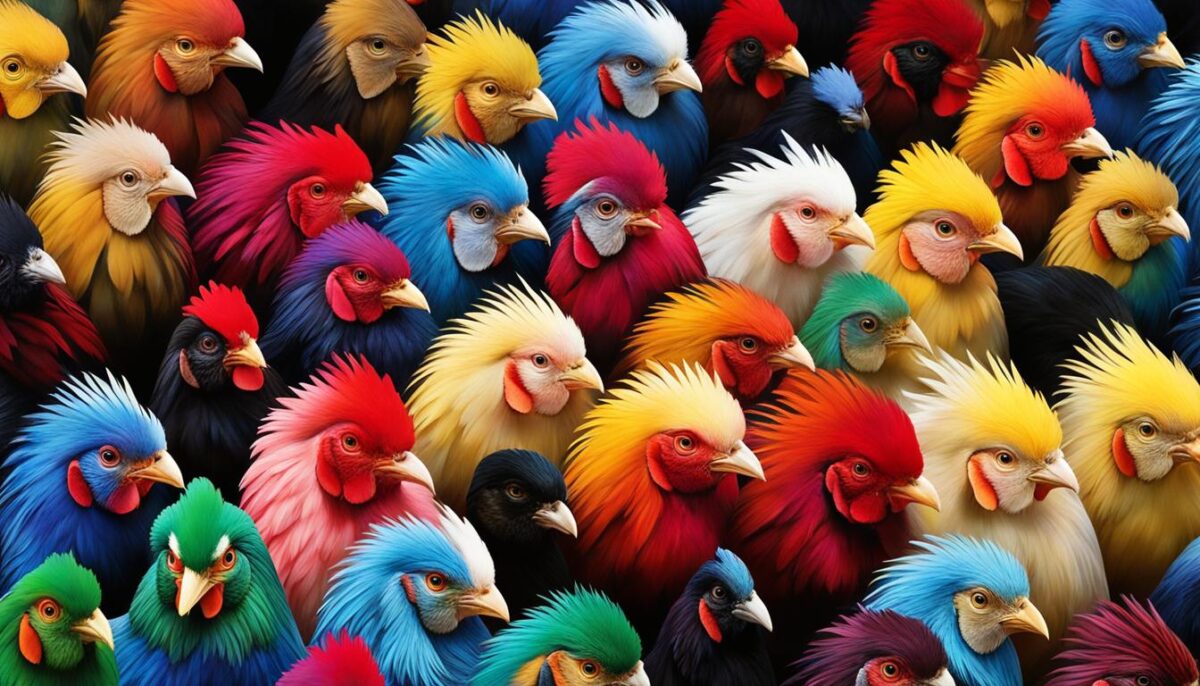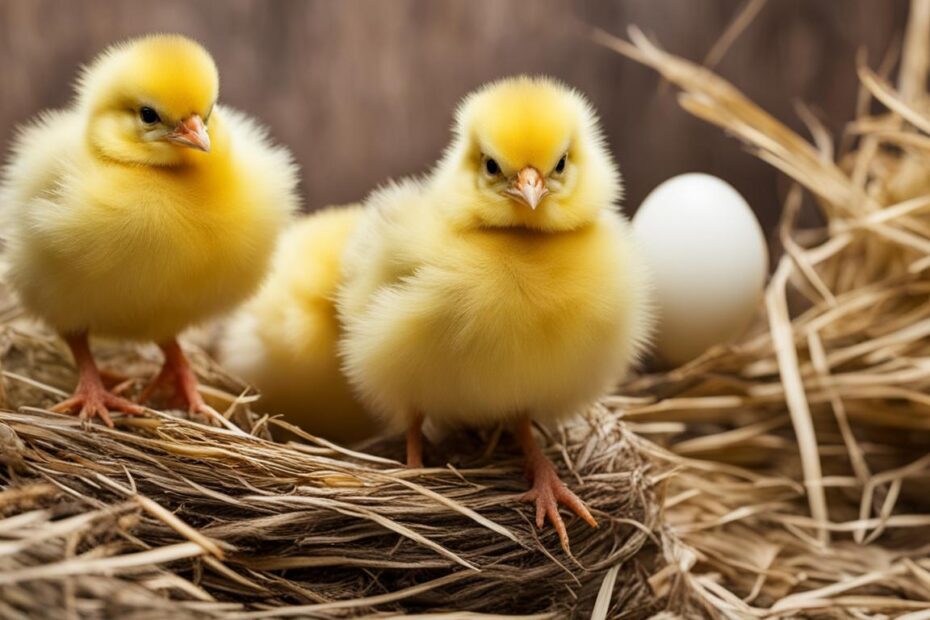Have you ever wondered how long it takes for a chicken to grow from an egg? The answer may surprise you. In a fascinating scientific experiment conducted by a group of Japanese high school students, a chicken was successfully grown from an egg without a shell in just 21 days. This groundbreaking experiment, documented in a research paper published in the Japanese Journal of Poultry Science, provides a unique insight into the growth and development of these fascinating creatures.
Key Takeaways:
- The growth of a chicken from an egg to a fully grown bird takes approximately 21 days.
- During this time, the chick goes through various stages of development, starting from the growth of its heart and embryo to the development of its limbs.
- Factors such as genetics, nutrition, and environmental conditions can influence the growth rate of chickens.
- Proper nutrition, including a balanced diet of protein, vitamins, and minerals, is essential for healthy and efficient growth.
- Scientists are exploring techniques like genetic modification and surrogacy to accelerate chicken growth and preserve rare chicken breeds.
Chicken Growth Stages: From Fertilized Egg to Chick
Understanding the growth stages of a chicken is fascinating and provides insight into the miracle of life. From the moment a chick starts developing in the egg, it goes through a series of transformative stages before hatching into a fully grown bird. Let’s explore the different stages of chicken development.
Stage 1: Heart Growth (Days 1-3)
During the first three days of incubation, the chick’s heart begins to form and develop. This critical stage sets the foundation for the chick’s circulatory system.
Stage 2: Embryo Formation (Days 4-5)
By the fifth day, the embryo takes shape, and its veins start to spread through the yolk. This increased vascularization allows for the transportation of essential nutrients and oxygen to support further growth.
Stage 3: Limb Development (Days 6-21)
Starting around day six, the chick’s limbs begin to develop. It starts growing feet, wings, and a beak. As days pass, the chick continues to grow and mature inside the egg until it is ready to break free and come into the world as a fully formed chick.
Observing these growth stages helps us appreciate the incredible journey a chicken embarks upon from a fertilized egg to a fully grown bird. Next, let’s explore the science behind chick growth, including the factors that influence it and the potential for accelerated growth techniques.
The Science Behind Chick Growth
Chick growth is a fascinating process influenced by various factors such as genetics, nutrition, and environmental conditions. Understanding these factors is crucial to ensuring the healthy and efficient growth of chickens.
Factors Affecting Chicken Growth
Genetics plays a significant role in determining the growth rate of chickens. Different breeds have varying growth potentials, with some breeds growing faster than others. Breed selection is an essential consideration for poultry farmers looking to maximize growth rates and productivity.
Nutrition is another critical factor influencing chicken growth. A well-balanced diet that provides the right amount of protein, vitamins, and minerals is necessary for optimal growth. Feeding chickens with high-quality feed and ensuring they have access to fresh water is vital for their development.
Environmental conditions also impact chicken growth. Temperature and lighting conditions should be carefully regulated to create an optimal environment. Chickens thrive in a temperature range of 65-75 degrees Fahrenheit, and providing appropriate lighting is essential for maintaining healthy growth patterns.
| Factor | Impact on Chicken Growth |
|---|---|
| Genetics | Determines growth potential and rate |
| Nutrition | Provides essential nutrients for growth |
| Environmental Conditions | Influences overall health and growth patterns |
By understanding and optimizing these factors, chicken farmers can ensure that their birds grow at their full potential, leading to healthy and productive flocks.
Chicken Growth Timeline: From Egg to Full-Grown Bird
The growth of a chicken from an egg to a fully grown bird follows a timeline of approximately 21 days. Understanding the different stages of development can help poultry farmers and enthusiasts track the progress of chicks and ensure their healthy growth. Below is a breakdown of the chicken growth timeline:
Day 1 to 3: Development of the Heart
During the first three days, the chick’s heart begins to develop. This crucial organ plays a vital role in supplying oxygen and nutrients to the growing embryo. At this stage, the chick is still in the early stages of development, but the foundation for its growth is being laid.
Day 5: Formation of the Embryo
By the fifth day, the embryo starts to take shape. Veins spread through the yolk, forming a network that helps transport nutrients to the growing chick. This milestone marks a significant step in the development of the chick, as its body structure begins to form.
Day 7: Limb Development
Around the seventh day, the chick’s limbs, such as its feet and beak, start to develop. This stage is an exciting time as the chick begins to take on a recognizable form. Farmers and breeders can observe the growth of the limbs as the chick continues to develop.
By day 21, a fully grown chick emerges from the egg, ready to explore its surroundings. It is important to note that these timelines may vary slightly depending on factors such as breed and environmental conditions. By closely monitoring the growth milestones and providing proper nutrition and care, poultry enthusiasts can ensure the healthy development of their chicks.
| Growth Stage | Timeline |
|---|---|
| Heart Development | Day 1 to 3 |
| Embryo Formation | Day 5 |
| Limb Development | Day 7 |
| Full-Grown Chick Emergence | Day 21 |
Accelerated Chicken Growth Techniques
Accelerating the growth of chickens has been a topic of interest for researchers seeking to improve the efficiency of poultry production. One fascinating experiment involved genetically manipulating the genes of chickens to induce the legs of a dinosaur, offering insights into the potential for accelerated chicken growth in the future.

Researchers inhibited a maturation gene called Indian Hedgehog in chickens, resulting in the development of tubular fibula, similar to the leg structure of dinosaurs. This experiment demonstrates how targeted genetic manipulation can lead to significant changes in a chicken’s growth and development.
Accelerated Chicken Growth Experiment Results
The experiment yielded fascinating results. The chickens with inhibited Indian Hedgehog genes showed a notable difference in leg structure compared to their non-genetically manipulated counterparts. This observation suggests that targeted gene manipulation can accelerate specific aspects of chicken growth.
| Group | Leg Structure |
|---|---|
| Control Group | Normal chicken leg structure |
| Experimental Group | Tubular fibula resembling dinosaur leg structure |
The experimental group, with its modified leg structure, opens up possibilities for further research into understanding the genetic mechanisms underlying chicken growth and development. While there are ethical considerations and potential limitations to this type of genetic manipulation, the study provides valuable insights into the potential for accelerating chicken growth through targeted genetic modifications.
Preservation and Diversification of Chicken Breeds
In the world of poultry, there are rare chicken breeds that are at risk of extinction due to various factors such as industrialization and commercialization. To safeguard the genetic heritage of these rare breeds, scientists at the University of Edinburgh’s Roslin Institute have embarked on a groundbreaking initiative to preserve and diversify the chicken gene pool.
By employing advanced genetic engineering techniques, researchers are working towards creating a gene bank of preserved chicken breeds. The process involves genetically modifying hens to be sterile and then transplanting follicles from rare bird breeds into these surrogates. This innovative approach ensures the continuity of rare chicken varieties, allowing their genetic traits to thrive and adapt for future generations.
The Significance of Preserving Rare Chicken Breeds
“Preserving rare chicken breeds is not only essential for conserving genetic diversity but also holds great potential for future research and development. These rare breeds possess unique characteristics that offer valuable insights into disease resistance, adaptability, and specialized traits.” – Dr. Jane Fraser, Geneticist at the Roslin Institute.
By maintaining a diverse gene pool, researchers can unlock new opportunities for developing resilient and sustainable poultry species. Additionally, rare chicken breeds may house genetic variations that provide resistance against emerging diseases, such as avian flu. Preserving these breeds ensures that their genetic traits are not lost, offering potential solutions to future challenges in the poultry industry.
| Rare Chicken Breeds | Main Genetic Traits | Benefits |
|---|---|---|
| Appenzeller Barthuhner | Adaptability to harsh climates and foraging capabilities | Potential for enhancing resilience in commercial chicken breeds |
| Crèvecoeur | Distinctive feathering and reputed gourmet meat qualities | Opportunities for niche markets and culinary excellence |
| Sultans | Ornamental attributes, including lavish plumage and regal appearance | Popular choice among collectors and poultry enthusiasts |
The preservation and diversification of rare chicken breeds not only serve to protect unique genetic traits but also contribute to sustainable farming practices and the preservation of cultural heritage. By safeguarding the future of rare chickens, researchers are paving the way for a more resilient and genetically diverse poultry industry.
Potential Benefits of Preserving Rare Chicken Breeds
Preserving rare chicken breeds through surrogacy techniques can offer various benefits. Rare chicken breeds carry valuable genetic variation that can be useful in the development of new breeds or in preserving genetic diversity. These breeds may also carry variants that provide resistance against new forms of avian flu. By maintaining a gene bank of rare chicken breeds, researchers can ensure the preservation of these valuable genetic traits for future generations.
Preserving rare chicken breeds is crucial for maintaining a healthy and sustainable chicken population. Genetic diversity is essential for the long-term survival of species, as it allows them to adapt to changing environmental conditions and resist diseases. By preserving rare chicken breeds, we can safeguard against the loss of important genetic traits that may be useful in the future.
One potential benefit of preserving rare chicken breeds is their potential resistance to new forms of avian flu. Avian flu is a highly contagious viral disease that affects birds, including chickens. It can cause severe illness and even death in infected birds. By preserving rare breeds that have shown resistance to avian flu, researchers can potentially identify and harness the genetic factors that contribute to this resistance. This knowledge can then be used to develop new breeds or strategies to combat avian flu in commercial chicken populations.
Additionally, rare chicken breeds may possess unique genetic variations that can be valuable for developing new breeds with specific traits or characteristics. For example, some rare breeds may have desirable traits such as superior meat quality, high egg production, or unique feather colors. By preserving these breeds, researchers can tap into their genetic potential to create new breeds or improve existing ones. This can contribute to the overall diversification and improvement of poultry species, benefiting both farmers and consumers.

Table: Rare Chicken Breeds with Potential Benefits
| Breed | Origin | Potential Benefits |
|---|---|---|
| Ayam Cemani | Indonesia | Unique black color meat and feathers |
| Jersey Giant | United States | Large size and meat quality |
| Houdan | France | Distinctive crest on the head and high egg production |
| Golden Comet | United States | High egg production |
| Malay | Malaysia | Tall, majestic appearance and unique meat flavor |
Extending the Surrogacy Technique to Other Poultry Species
Rare chicken breeds are not the only avian species at risk of extinction. Ducks, geese, and quails also face the threat of dwindling populations. To preserve and diversify these rare species, researchers are exploring the possibility of extending the surrogacy technique to other poultry species.
Preserving Rare Duck Breeds
Just like rare chicken breeds, certain duck breeds are facing the risk of extinction. By applying the surrogacy technique, scientists can use genetically modified hens as surrogate mothers for rare duck breeds. This method ensures the preservation of genetic material, contributing to the conservation of these unique avian species. By creating a gene bank for rare duck breeds, researchers can safeguard their genetic diversity for future generations.
Preserving Rare Geese Breeds
Similarly, rare geese breeds are also in danger of disappearing. By utilizing the surrogacy technique, researchers can implant the follicles of rare geese breeds into genetically engineered hens. This process allows for the preservation of rare geese breeds’ genetic material and promotes their conservation. Establishing a gene bank for rare geese breeds ensures that their unique traits and characteristics are not lost to time.
Preserving Rare Quail Breeds
Quails, known for their distinctive appearance and behavior, are often overlooked in discussions about rare avian species. However, several quail breeds are at risk of extinction due to factors such as habitat loss and hunting. By extending the surrogacy technique to these rare quail breeds, researchers can conserve their genetic diversity. This approach allows for the creation of a gene bank, ensuring that future generations have the opportunity to appreciate and benefit from the unique traits of these rare quails.
Through the extension of the surrogacy technique to other poultry species, researchers aim to preserve and diversify rare duck breeds, rare geese breeds, and rare quail breeds. By safeguarding their genetic material, scientists can contribute to the conservation of these unique avian species, allowing them to thrive for generations to come.
Conclusion
In conclusion, the growth of a chicken from an egg to a fully grown bird takes approximately 21 days. The development of the chick can be observed through various stages, from the growth of its heart to the formation of its limbs. Understanding the factors that influence chicken growth, such as genetics, nutrition, and environmental conditions, is crucial for ensuring healthy and efficient growth.
Moreover, experiments involving genetic modification and surrogacy techniques have opened up possibilities for accelerating chicken growth and preserving rare chicken breeds. By manipulating genes and utilizing surrogacy methods, researchers are exploring ways to enhance the growth process and create a gene bank of valuable genetic traits.
By continuing to study chicken growth and employing innovative techniques, researchers can contribute to the development and diversification of poultry species. This knowledge not only expands our understanding of chicken biology but also offers potential benefits for agriculture, conservation, and genetic research.
FAQ
How long does it take for a chicken to grow?
The growth of a chicken from an egg to a fully grown bird takes approximately 21 days.
What are the stages of chicken growth?
The specific stages of chick development include the growth of the heart and embryo, the development of limbs, and the emergence of a fully grown chick.
What factors influence chicken growth?
Factors such as genetics, nutrition, and environmental conditions can influence the growth rate of chickens.
How can I track the growth of a chicken?
You can use a chicken growth chart, which outlines the milestones of growth at different time intervals, to track the growth of a chicken.
Are there techniques to accelerate chicken growth?
Yes, experiments have been conducted to manipulate the genes of chickens and accelerate growth. However, these techniques are still in the experimental stage.
How can rare chicken breeds be preserved?
Researchers are working on techniques such as surrogacy, where genetically engineered chickens act as surrogates for rare breeds, to preserve rare chicken breeds and diversify the gene pool.
What are the potential benefits of preserving rare chicken breeds?
Preserving rare chicken breeds can help maintain genetic diversity, contribute to the development of new breeds, and potentially provide resistance against new forms of avian flu.
Can the surrogacy technique be extended to other poultry species?
Yes, the surrogacy technique could potentially be extended to other poultry species such as rare duck breeds, geese breeds, and quail breeds to preserve and diversify their genetic traits.
Source Links
- https://science.slashdot.org/story/17/02/18/0327255/genetically-modified-surrogate-hens-could-lay-eggs-of-rare-chicken-breeds-scientists-say
- https://www.dailymail.co.uk/news/article-3630643/How-grow-chick-egg-NO-SHELL-using-plastic-cup-cling-wrap.html
- https://www.dailymail.co.uk/sciencetech/article-3487977/Scientist-grow-dinosaur-leg-CHICKEN-bizarre-reverse-evolution-experiment.html


